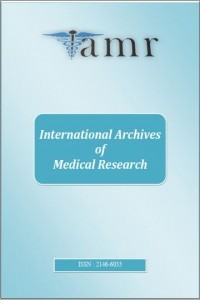The Relation Between Anaerobic Power and Rowing Ergometer Performance of Elite Rowers
The Relation Between Anaerobic Power and Rowing Ergometer Performance of Elite Rowers
Adolescence, pregnancy, birth,
___
- Cosgrove, M.J.; Wilson, J.; Watt, D.; Grant, S.F. The relationship between selected pysiological variables of rowers and rowing performance as determined by a 2000 m ergometer test., Journal of sports sciences (London), Nov 1999; 17 (11). p.845-852.
- Çelik, Ö. Reliability and validity of Modified Conconi Test on rowing ergometers, MA Thesis. Middle east Technical University, Physical Training and Sports Department; 2002.
- Hagerman, F.C. Applied physiology of rowing. Sports Medicine, 1984; 1, p.303- 326.
- Howald, H. Leistungsphysiologische Grunlagen des Ruderns. In Rudern, Sportmedizische und sportwissenschaftliche Aspekte (edited by J.M. Steinacker), pp. 31- 38. Berlin: Springer,1988.
- Ingham, S.A., G.P. Whyte, K. Jones, A.M. Nevill. Determinants of 2,000 m rowing ergometer performance in elite rowers European Journal of Applied Physiology Dec 2002; Vol. 88 Issue (3). p. 243-246.
- Jurimae, J.; Purge, P.; Maestu, J.; Jurimae, T. Physiological responses to successive days of intense training in competitive rowers. / (Intenziv sorozatterheles hatasa elvonalbeli evezosok elattani mutatoira.), Source: Sportorvosi szemle / Hungarian review of sports medicine (Budapest), 2002; 43 (1). p. 11-19.
- Jurimae, J.; Jurimae, T.; Pihl, E., (1999), Rowing ergometer performance and anaerobic capacity in college rowers., Source: Kinesiology (Zagreb), Dec 1999: 31 (2). p. 13-18,
- Kramer, J.F., Leger, A., Paterson, D.H. and Morrow, A. Rowing performance and selected descriptive, field and laboratory variables. Canadian Journal of Applied Physiology, 1994; (19), p.174- 184.
- Klusiewicz, A., Faff , J. and Zdanowicz, R. Diagnostic value of indices derived for special laboratory tests for rowers. Biology of Sport, 1999; 16, p.39- 50.
- Maestu, J.; Jurimae, J.; Jurimae, T. Erinevate meetodite alusel maaratud anaeroobse lave seos voistlustulemusega soudjatel. / (Relationships between anaerobic threshold measured by different methods and competition results in rowers.), Source: Kehakultuuriteaduskonna teadus- ja oppemetoodiliste toode kogumik (Tartu), 2001; (9), p. 126-131.
- Maestu, J.; Jurimae, J.; Jurimae, T. Prediction of 2000 metre rowing ergometer performance from metabolic and anthropometric variables in male rowers, Acta Kinesiologiae Universitatis Tartuensis (Tartu), 1999; (4), p. 199-208.
- Mickelson, T.C. and Hagerman, F.C. Anaerobic threshold measurements of elite oarsmen. Medicine and Science in Sports and Exercise, 1982; (14), p.440-444.
- Riechman, E., S., Zoeller, F., R., Balasekaran, G., Goss, F., L., and Robertson, J., R. Prediction of 2000 m indoor rowing performance using a 30 s sprint and maximal oxygen uptake journal of Sports Sciences Sept (2002); Vol. 20 Issue 9. p. 681-687.
- Sanı, F. Testing maximum oxygen capacities on rowing ergometer of a national Rowing Team athletes and relating this with their body somatotypes, MA Thesis, Marmara University,1996.
- Secher, N.H., Vaage, O. and Jackson, R.C. Rowing performance and maximal aerobic power of oarsmen. Scandinavian Journal of Sports Sciences, (1982); 4, p. 9- 11.
- Topsakal, N., Comparison of performance and blood parameters on water and before and after exercissing at rowing ergometre, MA Thesis, Marmara University, 1996.
- Hartmann, U. Querschnittuntersachungen an Leistunsruderern im Flachland und Langsschnittuntesuchungen an Elite-rundern in der hohe mittels eins zweistufigen tests auf einem Gjessing Rudern Ergometer. Konstanz: Hartung- Gorre, 1987.
- Droghetti, P., Jensen, K. and Nilsen, T.S. (). The total estimated metabolic cost of rowing. FISA Coach, 1991; (2), p, 1- 4.
- ISSN: 2146-6033
- Yayın Aralığı: Yılda 2 Sayı
- Başlangıç: 2011
- Yayıncı: Veysi AKPOLAT
Forecasting Diabetes Mellitus with Biometric Measurements
Emrullah ACAR, Mehmet Siraç ÖZERDEM, Veysi AKPOLAT
Pregnancy, Health, and Birth Related Problems of Pregnant Adolescents
Perran TOKSOZ, Ali CEYLAN, Özge ABACI BOZYEL
A cross sectional study of autoantibodies in children with hepatitis A infection
Ayfer Gözü PIRINCCIOGLU, Kendal YALCIN, Heybet TÜZÜN, Mustafa TASKESEN, Salih ADIGÜZEL, Sehmus SEVINC, Derya BUDAK, Remzi BESTAS
The Relation Between Anaerobic Power and Rowing Ergometer Performance of Elite Rowers
Turgay OZGUR, Bahar ODABAS OZGUR, Yusuf CELIK, Tayfun GULER, Tacettin BUYUKDEMIRTAS
To Publish or Perish: Strengths, Weaknesses of a Medical Paper (I)
Multiple Organ Involvement of Hydatid Cyst in 7-year-old Girl
Taşkın TAŞ, Ayfer Gözü PİRİNÇÇİOĞLU, Mehmet Emin GÜNEL, Mücahit FİDAN, Mehmet Ali TAŞ
